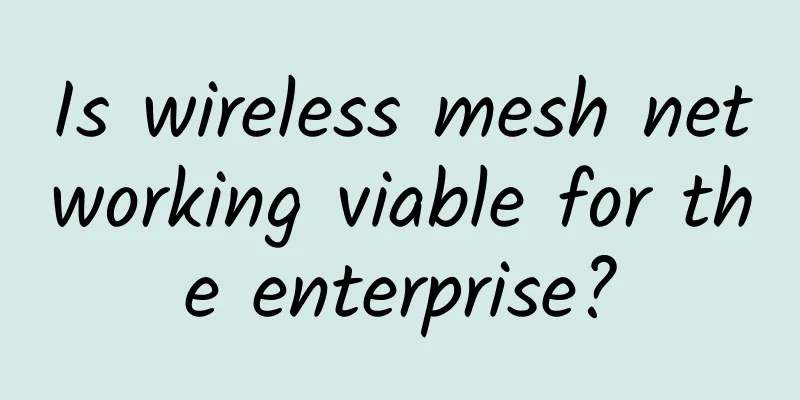Report: Global Private 5G Networks Will Take Enterprises to the Next Level!

|
A recent analysis by Frost & Sullivan shows that enterprises are using private 5G networks to improve the efficiency of production processes and ensure security. The analysis, titled "Global Private 5G Network Growth Opportunities," shows that combining the new power of 5G with the concept of private 5G networks can take enterprises to new heights. Some businesses have already started using 4G private networks. However, according to Frost & Sullivan, the possibilities that 5G can offer may entice these organizations to upgrade at some point. The developing global private cellular network market is expected to expand from $1.83 billion in 2021 to $6.32 billion by 2026, with a compound annual growth rate (CAGR) of 28.1%. According to the analysis, the contribution of private 5G networks will be a key part of this total, reaching $5.05 billion during the forecast period from $600 million in 2021. “Wi-Fi remains important to most enterprises, but private cellular networks cover use cases where Wi-Fi performs poorly and, in many cases, provide a better network at a lower cost,” said Troy Morley, principal analyst for the ICT industry at Frost & Sullivan. “Private 4G networks improved Wi-Fi, especially on mobile. Private 5G networks improve on 4G, enabling higher throughput, higher connection density, and lower latency.” “To achieve an acceptable return on 5G investments, communications service providers (CSPs) must better serve customers outside of the consumer market. This may involve network slicing, edge networks, and private 5G networks.” Available spectrum is critical for any wireless technology. According to Frost & Sullivan, operators have licensed a lot of spectrum for private 5G networks, but not all of it. To fully leverage the benefits of private 5G networks, enterprises must take several steps: first start working with a local CSP; licensed spectrum is highly reliable and provides the highest quality of service, which is essential for mission-critical operations; spectrum licensed by CSPs can be used globally. "For most enterprises willing to invest in dedicated 5G networks, access to licensed spectrum is the only real option," Frost & Sullivan said in its analysis. "Partnering with a CSP and its spectrum is often the best option." Enterprises should also check whether there is industry licensed spectrum available. Currently, governments in some parts of the world directly issue licensed spectrum to industry, which provides an alternative for CSP licensed spectrum. Industry licensed spectrum is also reliable and provides high-quality services, but may be more cost-effective. Finally, for business problems that do not involve security, enterprises can consider shared spectrum or unlicensed spectrum. Access to licensed spectrum is a necessity for dedicated 5G networks when addressing mission-critical use cases, but it is less necessary for enterprises solving problems that do not require the same level of reliability or quality of service. Exploring this option could include using shared spectrum, such as the U.S. uses for Citizens Broadband Radio Service (CBRS), or using unlicensed spectrum for dedicated 5G networks, which could reduce overall costs. |
<<: Without 5G performance guarantees, can operators fully exploit this opportunity?
>>: Analysis: Which businesses need a dedicated wireless network?
Recommend
iPhone 12 may not support 700MHz band, causing concerns in the UK telecom industry
According to the information currently available,...
SPI subsystem SPI spec
1.SPI hardware SPI: Serial Peripheral Interface, ...
HostYun: Hong Kong/Korea/Japan/US VPS monthly payment starts from 16 yuan, optional CN2 GIA line, AMD+NVMe high performance, etc.
HostYun is a Chinese VPS host provider that focus...
What happens when you enter a URL in your browser (Part 4): Network packets are transmitted in a LAN - how routers and switches forward packets
In the previous section, we introduced how networ...
Why is the latency so high for a simple HTTP call? Let’s capture a packet and analyze it
1. Recently, a strange phenomenon occurred in the...
Don’t always blame your router for a bad network. The truth is here.
It is undeniable that with the development of the...
QuickPacket: $69/month - E5-2683v4 CPU, 64G memory, 1TB or 500G SSD, 50TB monthly traffic, Los Angeles data center
I searched and found that the last information ab...
Understand TCP, UDP and port numbers in 10 minutes
When we start learning network programming, we fi...
Huaxia Finance: Create an investment product that makes young people addicted
[51CTO.com original article] If someone asked wha...
What are the big opportunities after NB-IOT in the field of Internet of Things?
With the freezing of the R3 core standard of NB-I...
5G standard draft released: it’s not just the speed that changes
The Mobile World Congress, the most influential a...
Why is NB-IoT, which once "firmly sat" at the top of the low-power Internet of Things, now frequently "questioned"?
With the advent of the Internet of Things era, th...
How to store IP addresses in MySQL efficiently?
A few days ago, a friend of mine went to an inter...
CMIVPS: Hong Kong high-bandwidth KVM 30% off, three-network direct connection, Hong Kong/US independent servers online
CMIVPS is a Chinese VPS service provider, providi...
5G, edge computing and IoT are expected to reshape networks
5G provides wireless cellular connectivity with h...









